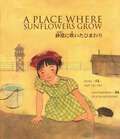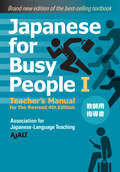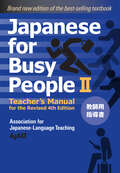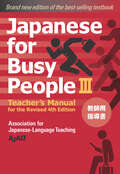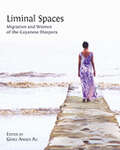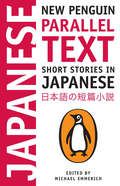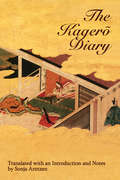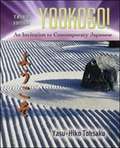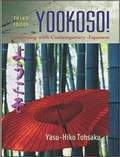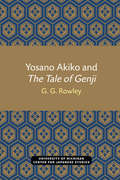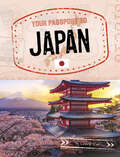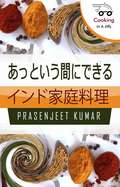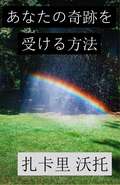- Table View
- List View
100あなたがお金を稼ぐための機会の
by Bernard Levine Zachary Wattsこの本は約100の異なる方法をお金を自宅から追加し、補足所得を稼ぐために働くことができますし、余分な収入をあなたの暇な時間にすると財政的に独立していることを心配することなくお金を実行することについての協議。
52ステップでやさしく解説 ビジネスマーケティング入門
by オーウェン・ジョーンズ「52ステップでやさしく解説 ビジネスマーケティング入門」は、「ビジネスのためにインターネットを利用することのポテンシャルには気づいているが、ビジネスを軌道に乗せるのにいっぱいいっぱいで、どうやってネット上で事業推進したらいいか分からない」という方、「その方法を調べるための時間がない」という方、「ネットビジネスを推進するために重要な情報だけを、今すぐ簡単に知りたい」という方…そんな皆様のために書かれました。 本書では、インターネットを利用した事業推進に関して当面の間必要と思われるあらゆる側面を52の短い章に分けて網羅しています。そのため、その他のビジネス本を買う心配は要りません。 インターネットは今でも急速に進化していますが、本書のように52のモジュールを使ったビジネス本はふたつとないことをお約束します。
A Place Where Sunflowers Grow
by Amy Lee-TaiBilingual English/Japanese. A young girl finds things to be joyful about in the Topaz Internment Camp.Mari wonders if anything can bloom at Topaz, where her family is interned along with thousands of other Japanese Americans during World War II. The summer sun is blazingly hot, and Mari's art class has begun. But it's hard to think of anything to draw in a place where nothing beautiful grows. Somehow, glimmers of hope begin to surface under the harsh sun--in the eyes of a kindly art teacher, in the tender words of Mari's parents, and in the smile of a new friend. Inspired by her family's experiences, author Amy Lee-Tai has crafted a story rooted in one of America's most shameful historical episodes--the internment of 120,000 Japanese Americans during World War II. The art schools which offered internees moments of solace and self-expression are a little known part of this history. Amy Lee-Tai's gentle prose and Felicia Hoshino's stunning mixed media images are a testimony to hope and how it can survive alongside even the harshest injustice.
A Short History of Transport in Japan from Ancient Times to the Present
by John Andrew BlackA Short History of Transport in Japan from Ancient Times to the Present is a unique study: the first by a Western scholar to place the long-term development of Japanese infrastructure alongside an analysis of its evolving political economy.
From Darkness to Light: Writers in Museums 1798-1898
by Rosella Mamoli Zorzi;Katherine ManthorneFrom Darkness to Light explores from a variety of angles the subject of museum lighting in exhibition spaces in America, Japan, and Western Europe throughout the nineteenth and twentieth centuries.
Japanese for Busy People Book 1: Revised 4th Edition (Japanese for Busy People Series)
by AJALTJapanese for Busy People is the most popular Japanese language textbook series in the world. Japanese for Busy People series is one of the most comprehensive series containing texts, workbooks and teacher&’s manuals for all three volumes. Audio recordings for the dialogues and listening exercises are now available as free download from kodansha.us. Teacher&’s Manual provides specific suggestions for teachers on how to use the main text in a classroom setting and how to coordinate it with the workbook. CAN-DO section is useful in creating lesson plan and measuring learners&’ mastery level. It also contains a Japanese translation of all of the key components of the main text, such as culture notes, notes on Japanese grammar, and active communication. This first of three volumes introduces "survival Japanese" — the absolute minimum amount of Japanese needed to live in Japan. Thus, the vocabulary and grammatical items it introduces are limited to about a third of what is typically introduced in a first-year course. In addition, the book features notes on Japanese culture intended to expand the learner&’s understanding of Japan, its customs and people. Japanese for Busy People I is available in two formats: romanized and kana. The Romanized Version uses romanized Japanese throughout, with kana in the Opening Dialogues of each lesson. The Kana Version — exposing students to hiragana and katakana from the very beginning — uses only kana.The content of the two books is otherwise exactly the same. The companion volume, Japanese for Busy People 1: The Workbook for the Revised 4th Edition contains a variety of illustrated exercises for mastering the basic sentence patterns presented in the main text.
Japanese for Busy People Book 2: Revised 4th Edition (Japanese for Busy People Series)
by AJALTThe Teacher&’s Manual provides specific suggestions for teachers on how to use Japanese for Busy People Book II in a classroom setting and how to coordinate it with the workbook. CAN-DO section is useful in creating lesson plan and measuring learners&’ mastery level. It also contains a Japanese translation of all of the key components of the main text, such as culture notes, notes on Japanese grammar, and active communication.
Japanese for Busy People Book 3: Revised 4th Edition (Japanese for Busy People Series-4th Edition)
by AJALTThe Teacher&’s Manual provides specific suggestions and practical examples for teachers on how to use Japanese for Busy People Book III in a classroom setting and how to coordinate it with the accompanying workbook. CAN-DO section is useful in creating lesson plans and measuring learners&’ mastery level. It also provides Japanese translations of all of the key components of the main text, such as culture notes, notes on Japanese grammar, and active communication.
Music and the Making of Modern Japan: Joining the global concert
by Margaret MehlJapan was the first non-Western nation to compete with the Western powers at their own game. The country’s rise to a major player on the stage of Western music has been equally spectacular. The connection between these two developments, however, has never been explored. How did making music make Japan modern? How did Japan make music that originated in Europe its own? And what happened to Japan’s traditional music in the process? Music and the Making of Modern Japan answers these questions. Discussing musical modernization in the context of globalization and nation-building, Margaret Mehl argues that, far from being a side-show, music was part of the action on centre stage. Making music became an important vehicle for empowering the people of Japan to join in the shaping of the modern world. In only fifty years, from the 1870s to the early 1920s, Japanese people laid the foundations for the country’s post-war rise as a musical as well as an economic power. Meanwhile, new types of popular song, fuelled by the growing global record industry, successfully blended inspiration from the West with musical characteristics perceived as Japanese. Music and the Making of Modern Japan represents a fresh contribution to historical research on making music as a major cultural, social, and political force.
Second Chance
by Ruth RosengartenIn this intimate memoir, Ruth Rosengarten explores the subject of evocative objects through a series of interconnected essays.
Short Stories in Japanese: New Penguin Parallel Text (Penguin Parallel Text)
by Edited by Michael EmmerichA dual-language edition of Japanese stories—many appearing in English for the first time This volume of eight short stories, with parallel translations, offers students at all levels the opportunity to enjoy a wide range of contemporary literature without having constantly to refer back to a dictionary. The stories—many of which appear here in English for the first time—are by well-known writers like Haruki Murakami and Banana Yoshimoto, as well as emerging voices like Abe Kazushige, Ishii Shinji, and Kawakami Hiromi. From the orthodox to the cutting-edge, they represent a range of styles and themes, showcasing the diversity of Japanese fiction over the past few decades in a collection that is equally rewarding for beginning, intermediate, and advanced students of English or Japanese. Complete with notes, the stories make excellent reading in either language.
The Kagero Diary: A Woman’s Autobiographical Text from Tenth-Century Japan (Michigan Monograph Series in Japanese Studies #19)
by Sonja ArntzenJapan is the only country in the world where women writers laid the foundations of classical literature. The Kagero Diary commands our attention as the first extant work of that rich and brilliant tradition. The author, known to posterity as Michitsuna’s Mother, a member of the middle-ranking aristocracy of the Heian period (794–1185), wrote an account of 20 years of her life (from 954–74), and this autobiographical text now gives readers access to a woman’s experience of a thousand years ago. The diary centers on the author’s relationship with her husband, Fujiwara Kaneie, her kinsman from a more powerful and prestigious branch of the family than her own. Their marriage ended in divorce, and one of the author’s intentions seems to have been to write an anti-romance, one that could be subtitled, “I married the prince but we did not live happily ever after.” Yet, particularly in the first part of the diary, Michitsuna’s Mother is drawn to record those events and moments when the marriage did live up to a romantic ideal fostered by the Japanese tradition of love poetry. At the same time, she also seems to seek the freedom to live and write outside the romance myth and without a husband. Since the author was by inclination and talent a poet and lived in a time when poetry was a part of everyday social intercourse, her account of her life is shaped by a lyrical consciousness. The poems she records are crystalline moments of awareness that vividly recall the past. This new translation of the Kagero Diary conveys the long, fluid sentences, the complex polyphony of voices, and the floating temporality of the original. It also pays careful attention to the poems of the text, rendering as much as possible their complex imagery and open-ended quality. The translation is accompanied by running notes on facing pages and an introduction that places the work within the context of contemporary discussions regarding feminist literature and the genre of autobiography and provides detailed historical information and a description of the stylistic qualities of the text.
Yosano Akiko and The Tale of Genji (Michigan Monograph Series in Japanese Studies #28)
by Gaye Rowley G. G. RowleyYosano Akiko (1878–1942) has long been recognized as one of the most important literary figures of prewar Japan. Her renown derives principally from the passion of her early poetry and from her contributions to 20th-century debates about women. This emphasis obscures a major part of her career, which was devoted to work on the Japanese classics and, in particular, the great Heian period text The Tale of Genji. Akiko herself felt that Genji was the bedrock upon which her entire literary career was built, and her bibliography shows a steadily increasing amount of time devoted to projects related to the tale. This study traces for the first time the full range of Akiko’s involvement with The Tale of Genji. The Tale of Genji provided Akiko with her conception of herself as a writer and inspired many of her most significant literary projects. She, in turn, refurbished the tale as a modern novel, pioneered some of the most promising avenues of modern academic research on Genji, and, to a great extent, gave the text the prominence it now enjoys as a translated classic. Through Akiko’s work Genji became, in fact as well as in name, an exemplum of that most modern of literary genres, the novel. In delineating this important aspect of Akiko’s life and her bibliography, this study aims to show that facile descriptions of Akiko as a “poetess of passion” or “new woman” will no longer suffice.
Your Passport to Japan (World Passport Ser.)
by Cheryl KimWhat is it like to live in or visit Japan? What makes Japan’s culture unique? Explore the geography, traditions, and daily lives of the Japanese people.
e-有名人サインなど
by Bernard Levine Zachary Wattsあなたの書籍を保管したくない場合は、あなたがあなたの本を売ることができる方法を見つける方法について話しています。 むしろ、慈善団体の書籍をオークションしてオンラインで販売する場合や、質屋などの場所に書籍を持っている場合は、書籍をオンラインで販売するさまざまな方法があります。 あなたの本を手に入れ、あなたの本を永遠に宝物にしてくれる人がたくさんいるからです。
あっという間にできる インド家庭料理
by Prasenjeet Kumar 畠山容美インドの家庭料理をわかりやすく 料理店では得られない100種類以上ものレシピを収録した,他のインド料理本とは一味違った本書 注目したのは,インド人が毎日家庭で食べている料理だ 知られざるミステリアスなインド家庭料理を,段階を追って紹介 乏しい料理の経験値と冒険心溢れる胃袋を持つすべての人へ 元企業弁護士で現在食道楽,プラセンジート クマルの2作目にあたる本書では,インドの家庭料理がレストラン食といかに違うかを探る 彼独特の半伝記風スタイルで,インド料理を探し求める旅はロンドンから始まり,なぜヨーロッパ人の友人たちが 家庭料理 と レストラン食 をめぐった奇妙な議論をしないのか首を傾げる そしてインドのレストランの調理方法は,同じ料理であっても家庭のそれとは真逆であることを学ぶのだった こんな人におすすめ インドを含め,世界のどこでも家庭の味を楽しみたいインド人 出身地域の料理,例えば南インド料理に馴染みがあるが,東インドと北インドの家庭料理も学びたいインド人 インド人じゃないけれどインド料理が大好きで,油と唐辛子の量を調節しつつ,スパイスの迷宮を導いてくれる人を探している
あなたが子供のときに歌った歌
by Bernard Levine「あなたが子供だったときに歌った歌は、あなたが子供として楽しんでいたさまざまな話を話します。 むしろ、それが学校、家庭などであった場合、あなたが歌った好きな曲は、いつでも永遠にあなたに加わり、いつでも楽しめます。
あなたが愛する人のために何をしますか
by Bernard Levine Zachary Wattsあなたが何をするか、またはあなたが愛するもののためにどこまで行くかについての協議?むしろそれはあなたの [' ' ガールフレンド、妻、彼氏、夫、子供、家族の友人等 ' '] あなたは彼らのために何をしますか? いつも守ってくれる?そこから?愛とそれらを大切に?などなど。あなたが愛する人々のすべてを行う場合は、あなたが幸せになる必要がありますし、あなたが愛する人々に素晴らしい人であるため、あなた自身に戻って一つ一つのパットを与える。物語の道徳的な ' ' は、あなたが好きで、そこに厚いと薄い、常に、永遠のため、明日は誰にも約束されているものをあきらめることはありませんので、常にあなたがそれらを毎日愛しているものを教えてください。' ' 神の誇りを毎日作り続ける ' '
あなたが書いた詩の支払いを受ける
by Bernard Levine Zachary Watts本は、あなたが詩を書くことが大好きなら、あなたは300以上のサイトを介して詩を書くために支払わ得ることができるので、なぜあなたが行うために楽しむ何かのために支払われないことを示しています?その価値があるので!
あなたのソウルメイトに会う方法
by Bernard Levine Zachary Watts「あなたの魂の仲間を満たす方法」あなたの魂の仲間をいつ、どこで満たすかについて話します。 今日彼女に会うとき? 明日? 来週? 今から1ヶ月? 今から数ヶ月、来年? または数年後? 唯一の時間は分かりますが、あなた自身のことに集中して自分の夢を追い求めることを、神はあなたの「パーフェクトソウルメイト」を探し求めて探しています。 彼女をあなたに抱きしめて、強くしてください。あなたの夢に従って、神が残りをするようにしましょう。
あなたの奇跡を受ける方法: Its Use In Paint - Primary Source Edition
by 扎卡里 沃托奇跡をそんなに長くしましょう、あなたの人生に来てください! この本は、あなたが人生、幸福と成功の秘密を発見し始めると、あなたは非常に幸せになるエキサイティングな本です。 自分自身に忠実であり, 自分の心に従ってください。 奇跡をそんなに長くしましょう、あなたの人生に来てください!


